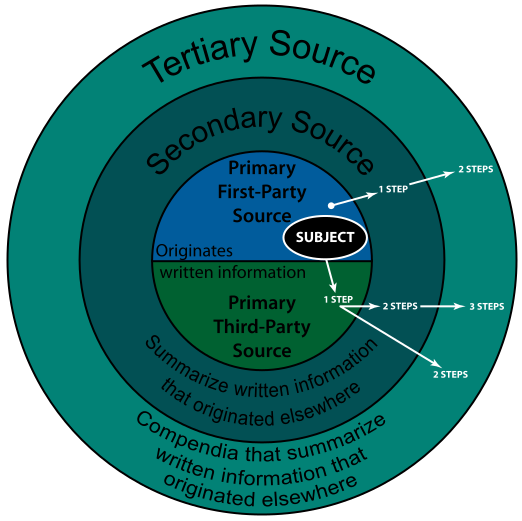Sources of Information on Wikipedia
Most people use Wikipedia whenever they need some information on any topic, be it a place, object, historical event or a public figure. Where does all this information come from? Who writes these articles? Wikipedia is a crowdsourced encyclopedia, meaning that any internet user can contribute to its library. This knowledge raises another significant question – if anyone can write and edit the articles, how can we be sure about the material we read?
Wikipedia, in an article on its verification policy, speaks in a nutshell:
“Readers must be able to check that any of the information within Wikipedia articles is not just made up. This means all material must be attributable to reliable, published sources. Additionally, quotations and any material challenged or likely to be challenged must be supported by inline citations.”
The emphasis Wikipedia puts on citing the sources of information in its articles tells a lot about the way Wikipedia users can be assured of the content presented to them. The word “source” when referring to the articles on Wikipedia has three meanings:
- The piece of work (the article, book)
- The creator of the work (the writer, journalist)
- The publisher of the work
In this article, we’ll understand the sources that Wikipedia considers as reliable and those that it considers questionable. Let’s start with understanding what the common sources are.
What are some of the common sources for Wikipedia?
Wikipedia, well-known for citing the sources of information it shows, gets its information from a wide variety of sources. Some of the most commonly referenced sources are:
- News portals
- Textbooks
- Books (monographs)
- Blog articles
- Research articles
- Newspapers and magazines
- Autobiographies
The available sources of information can be divided into three categories depending on where they come from and what ground they stand: primary, secondary and tertiary.

Primary, Secondary and Tertiary sources
Almost every information is born out of someone who has a direct connection to it. Such information usually has facts mixed with personal experiences and opinions, and comes from the limited perspective of an individual. These sources are known as primary sources. Some examples are autobiographies, original research, witnesses’ accounts of incidents and so on.
Information provided by the primary sources is eventually analyzed, evaluated and interpreted to produce research articles, academic papers, books, reviews and so on. These sources are known as secondary sources. These sources are usually peer reviewed before publication.
Finally, the information from multiple secondary sources are compiled, summarized or consolidated into articles, encyclopedias or textbooks which provide an overview on the topic. These are known as tertiary sources. Ideally, these sources don’t involve any research and simply cite multiple sources the authors consider reliable.
What are the sources Wikipedia consider as reliable?
Wikipedia considers text, audio, video and multimedia materials that have been recorded, broadcasted, distributed or archived by a reputed party as reliable sources. The reliability of a source depends on context. The more a source is engaged in fact checking, analyzing legal issues and writing, the more reliable it is considered. The age of a publication matters a lot too; especially in the scientific and academic fields where new information is continuously being brought to light.
Wikipedia articles should be based mainly on reliable secondary sources, i.e., a document or recording that relates or discusses information originally presented elsewhere.
Reputable tertiary sources, such as introductory-level university textbooks, almanacs, and encyclopedias, are considered . Tertiary sources, as mentioned in the previous section, are compilations of important information from various secondary sources. Wikipedia articles themselves are considered tertiary sources.
Some sources that Wikipedia considers reliable are:
- Academic and peer-reviewed publications
- Textbooks by credible authors
- Books published by reputed publishing houses
- Reputed magazines
- Mainstream newspapers
We can find news sources being cited frequently on Wikipedia. News sources often contain both factual content and opinion content. News reporting from well-established news outlets are generally considered to be reliable for statements of fact.
Sometimes it’s necessary to refer to opinionated sources. When taking information from such content, the identity of the author may help determine reliability. The opinions of specialists and recognized experts are more likely to be reliable and to reflect a significant viewpoint.
What kind of sources are considered as questionable?
Questionable sources are those with a poor reputation for checking the facts or poorly edited material. Such sources include websites and publications expressing views that are widely acknowledged as extremist, that are promotional in nature, or that rely heavily on rumors and personal opinions.

An example of sponsored content
Sponsored content is generally unacceptable as a source. Sources that do not clearly distinguish staff-written articles from sponsored content are also questionable.
Anyone can create a personal web page or publish their own book and claim to be an expert in a certain field. For that reason, self-published sources are largely not acceptable. Personal pages on social networking sites, tweets, and posts on Internet forums are all examples of self-published media.
While academic journals are considered as some of the most reliable sources, in recent years there has been a rapid rise of low quality journals, commonly known as predatory journals, that publish whatever is submitted as long as the author is willing to pay a fee. It has become necessary to check the journal’s credibility along with that of the research article.
Primary sources cannot be considered as reliable sources as they aren’t verified through an independent body and usually may have conflict of interest. However, it doesn’t mean that all information from the primary sources is unreliable. Although specific facts may be taken from primary sources, secondary sources that present the same material are more preferable.
Because of the research and investigation involved, Wikipedia considers secondary sources as mostly reliable. Secondary sources, however, are vulnerable to bias, or subjective analysis and commentary. Biased secondary sources should be viewed with suspicion as they may misquote or quote out of context.
Note: All the images used in this article are freely licensed media resources.
References:
-
Many Academics Are Eager to Publish in Worthless Journals (Published 2017)
-
https://archive.fo/Hr8tk
-
https://web.archive.org/web/20170105195017/https://scholarlyoa.files.wordpress.com/2015/01/criteria-2015.pdf
-
For Scientists, an Exploding World of Pseudo-Academia
-
Wikipedia bans Daily Mail as ‘unreliable’ source
-
Library Guides: Primary, Secondary and Tertiary Sources: Types of Information Sources
-
https://web.archive.org/web/20110922081941/http://bentley.umich.edu/refhome/primary/